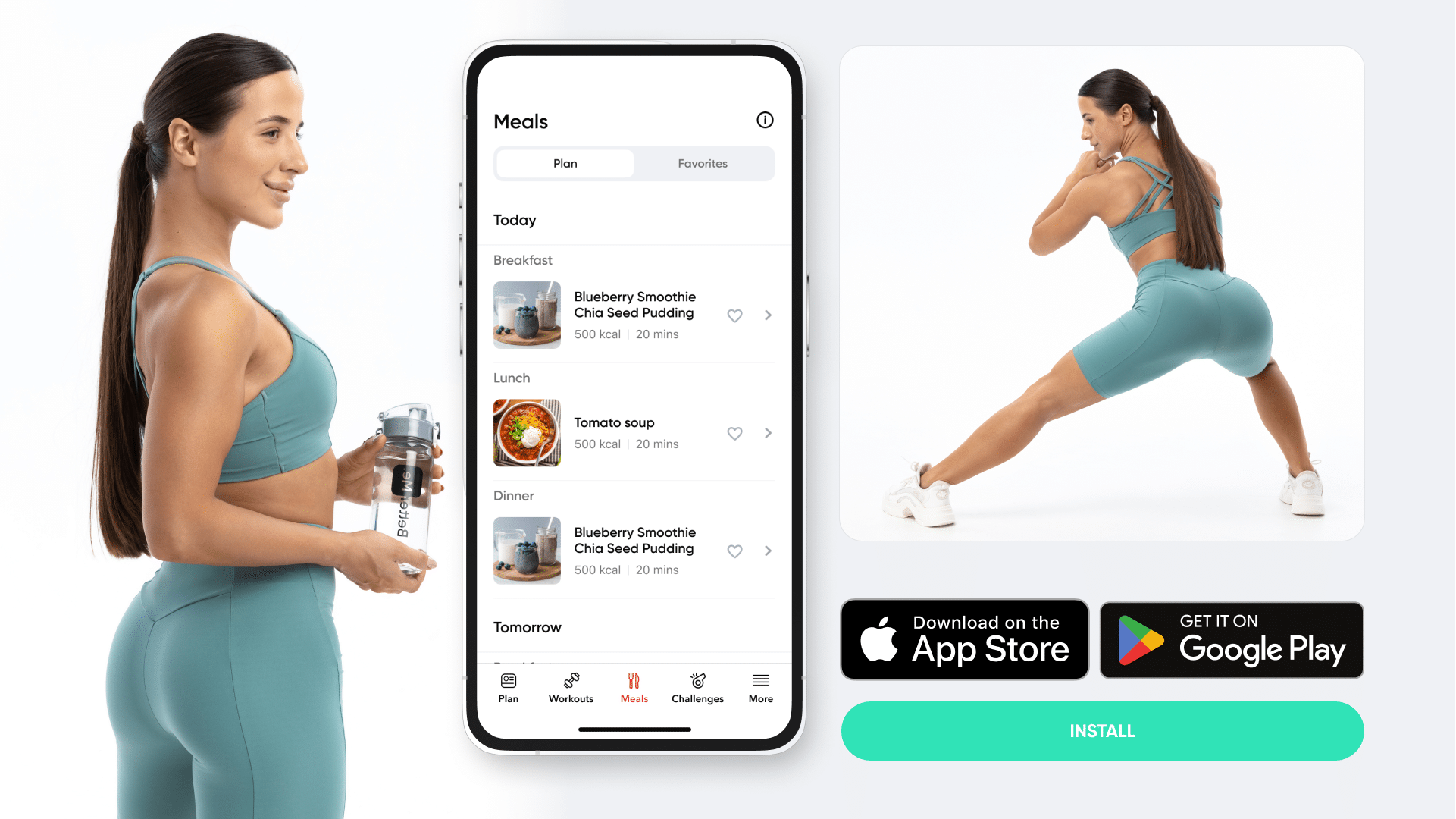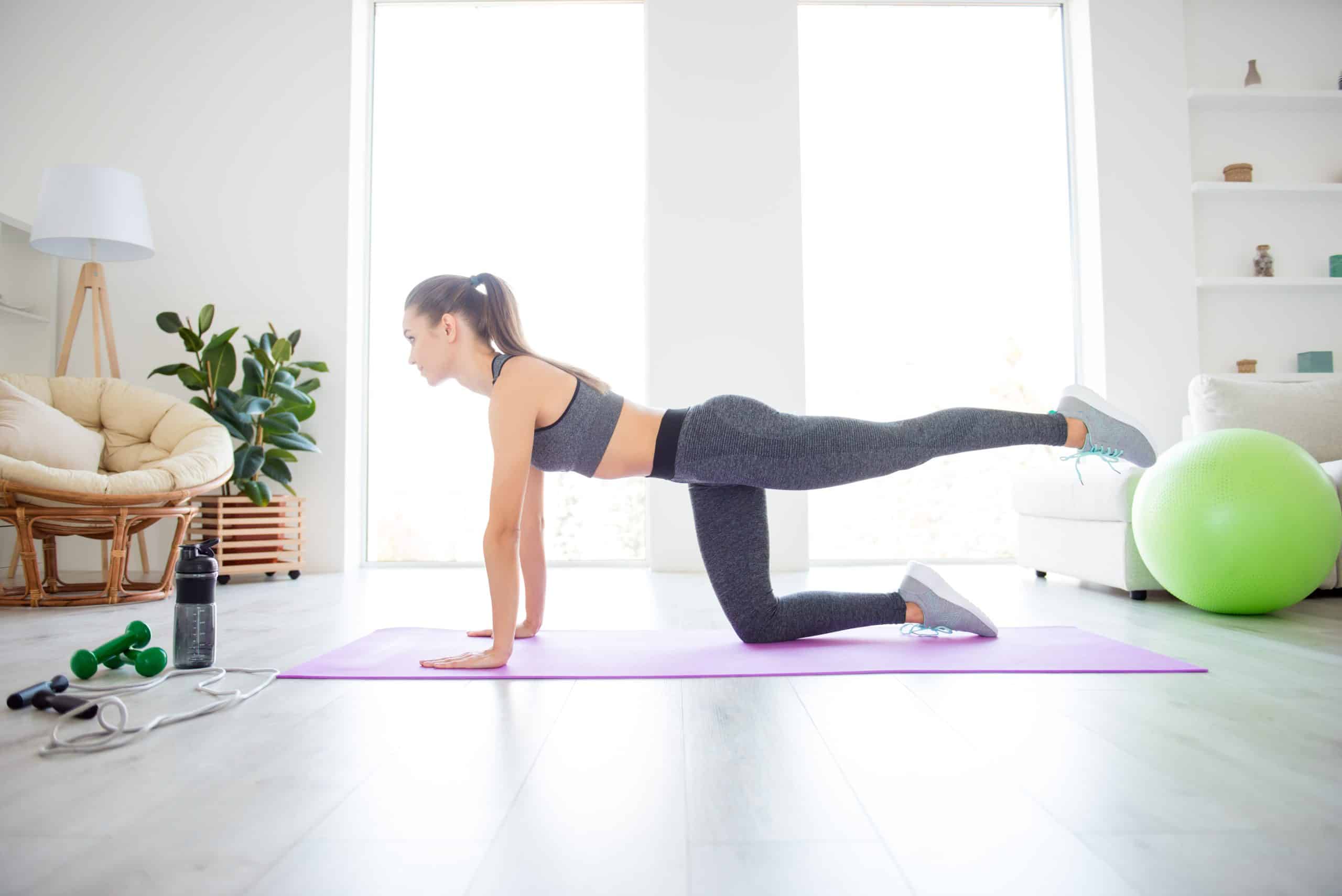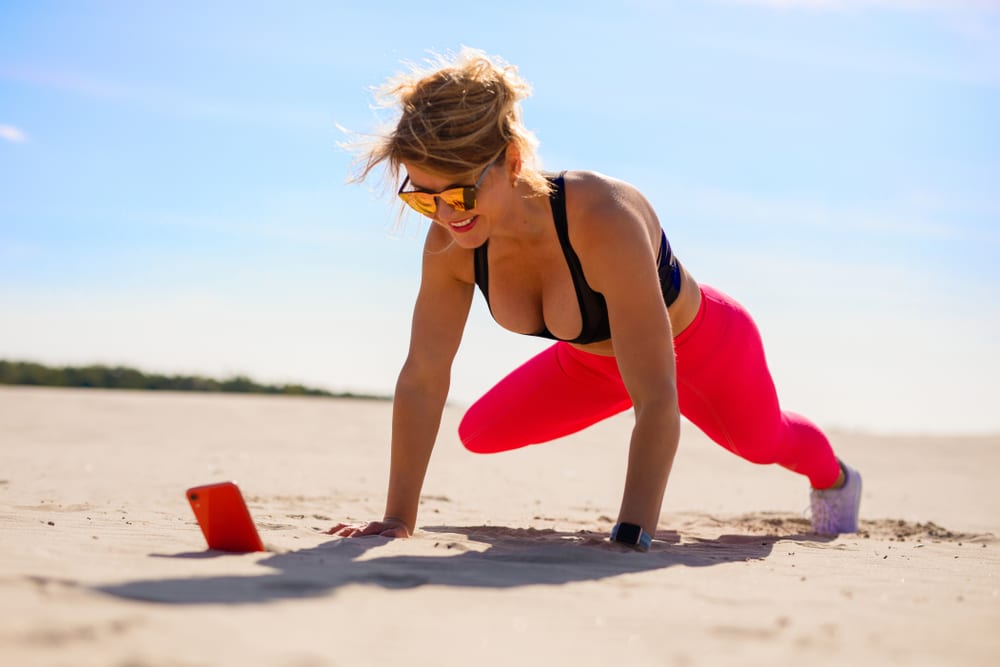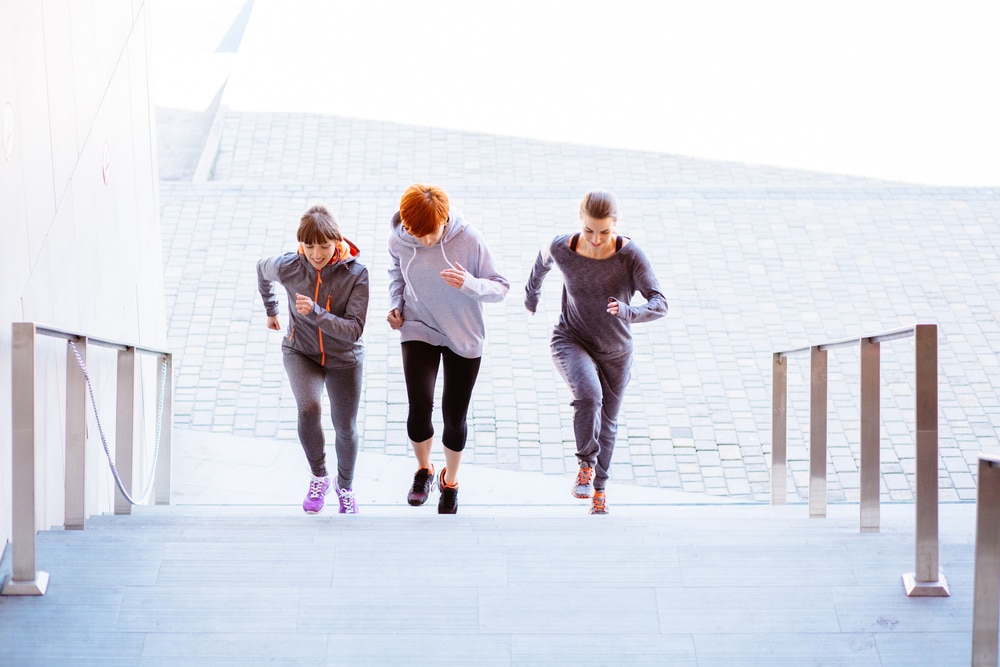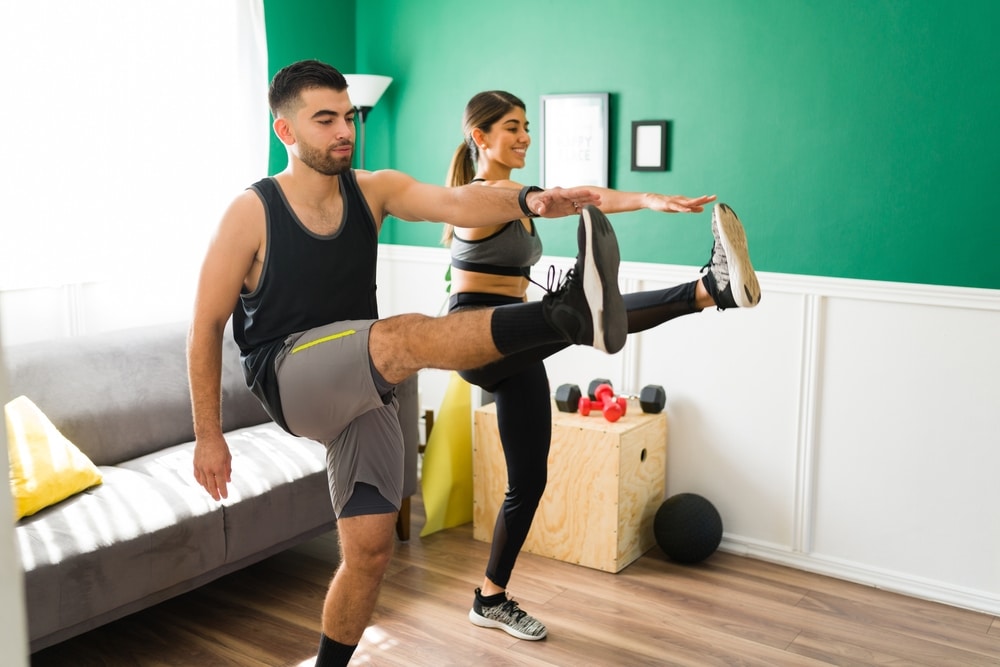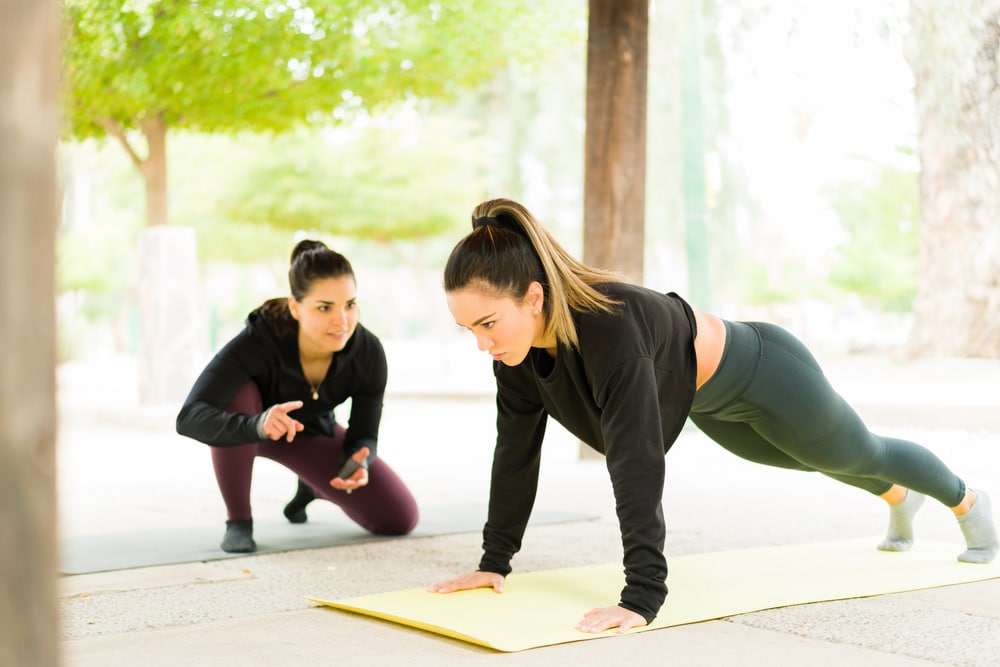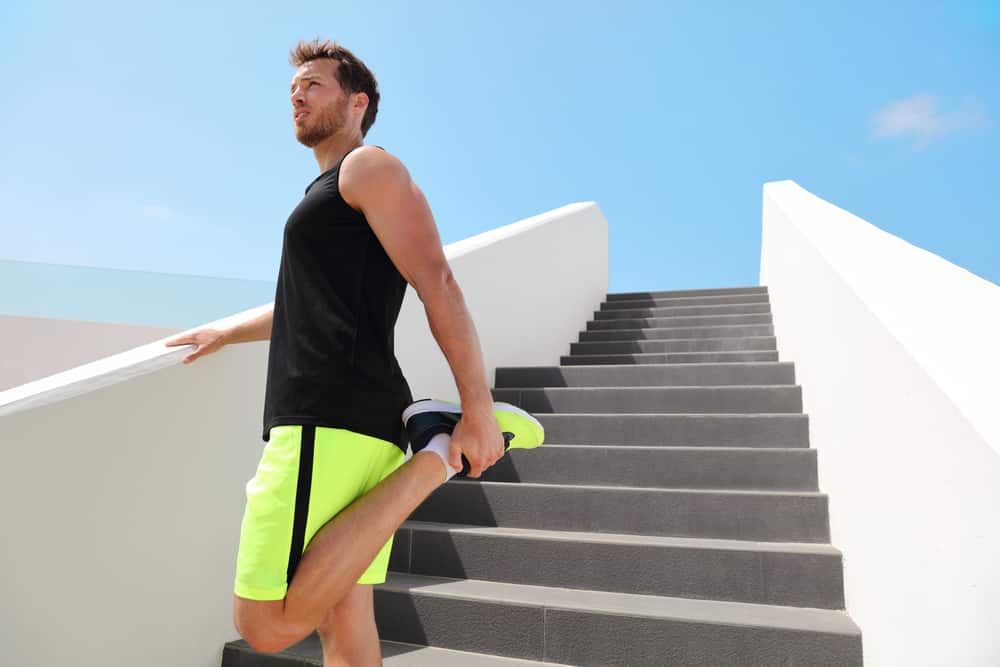Your favorite workout just got better, and shorter.
Sure, on a good day, you’d love to spend an hour sweating it out at the gym, but let’s be honest – life can get busy. Between work, family obligations, and other commitments, it can be difficult to find the time to prioritize health and fitness.
High-intensity interval training (HIIT) combines short bursts of intense exercise with periods of rest or lower-intensity activity. These workouts are designed to get your heart rate up, burn calories, and improve cardiovascular fitness in a fraction of the time compared to traditional steady-state exercises (1).
But what makes HIIT even better? You’re free to convert any workout of your choice (think cycling, running, or even weights) into a high-intensity interval workout.
Are HIIT Workouts Good for Females?
High-intensity interval training (HIIT) can be highly beneficial for females, offering significant health and fitness improvements.
Here are some reasons in favor of HIIT workouts for women at home:
Improved Cardiovascular Health: HIIT has been shown to effectively increase aerobic capacity. This is particularly beneficial for cardiovascular health, including in cardiac patients (2).
Enhanced Metabolic Health: HIIT can help reduce blood sugar levels and insulin resistance, which is essential for metabolic health (3). This is particularly important for women who are at risk of or managing diabetes.
Fatigue Resistance: Research has indicated that females may exhibit increased fatigue resistance than males during repeated high-intensity running (4). This suggests that women may experience enhanced endurance and recovery in HIIT workouts.
Hormonal Benefits: HIIT can stimulate the production of human growth hormone (HGH) (5), which helps increase caloric burn and slow down the aging process (6).
Overall Fitness: HIIT is efficient in burning calories, reducing fat, and improving muscle definition. This makes it an effective workout for those with limited time (7).
BetterMe: Health Coaching app is a foolproof way to go from zero to a weight loss hero in a safe and sustainable way! What are you waiting for? Start transforming your body now!
Do HIIT Exercises Help with Belly Fat?
HIIT exercises help increase calorie burn, which can aid in losing overall body fat, including belly fat. In addition, HIIT workouts involve a combination of strength and cardio exercises that target multiple muscle groups simultaneously. This can help build lean muscle mass and boost metabolism, which can lead to a reduction in belly fat (7).
However, spot reduction (targeting fat loss in one specific area) isn’t possible with any type of exercise. The best way to achieve a flat stomach is through a combination of regular physical activity, healthy eating habits, and lifestyle changes (8).
Is 30 Minutes of HIIT Exercise a Day Enough?
30 minutes of HIIT exercise can be enough for an effective and efficient workout. The intensity, volume, and structure of the workout are what matters when it comes to achieving desired results, rather than the duration.
To make the most out of a 30-minute HIIT workout, choose exercises that work multiple muscle groups and increase intensity by shortening rest periods or adding resistance. As you become more fit and accustomed to HIIT, you can gradually increase the duration of your workouts if desired.
If you’ve been inactive for a while, it’s best to start with shorter sessions and gradually work your way up to longer workouts to avoid injury.
Space out your HIIT workouts throughout the week, giving your body time to recover and preventing overtraining. It’s recommended to do at least 2-3 HIIT sessions per week for optimal results.
Is 20 Minutes of HIIT per Day Enough?
20 minutes of HIIT per day is a great start for beginners and can yield significant health and fitness benefits. However, the duration and intensity of your HIIT workout should be personalized based on your fitness level, goals, and any pre-existing medical conditions.
If you’re short on time, you can opt for shorter, more intense workouts. On the other hand, if you have a low fitness level or are recovering from an injury, it may be better to start with longer intervals of lower-intensity exercise.
Here are 3 HIIT workout ideas for women of all ages and fitness levels that can be done in 20 minutes:
1. The Classic Tabata
The Tabata protocol is one of the most popular and effective forms of HIIT training. It involves 8 rounds of 20 seconds of intense exercise followed by 10 seconds of rest (9).
For this routine, choose an exercise such as burpees, jumping jacks, or mountain climbers. Perform the chosen exercise at maximum effort for 20 seconds then take a 10-second break before moving on to the next round. Repeat this for a total of 8 rounds (4 minutes).
What makes Tabata one of the best HIIT workouts for women is its simplicity and flexibility. You can choose to stick with one exercise or mix it up with different exercises for each round.
It may also be an ideal HIIT workout for female beginners as it can be easily modified to suit different fitness levels. For example, you can decrease the number of rounds or increase the rest time if needed.
Warm-Up (5-10 minutes)
Before starting the Tabata routine, it’s important to warm up to prevent injuries and prepare your body. Here are some warm-up exercises:
- Jumping Jacks: 2 minutes
- Arm Circles: 1 minute forward, 1 minute backward
- Leg Swings: 1 minute each leg
- High Knees: 2 minutes
Tabata Routine (4 minutes each set)
Perform each set with maximum intensity for 20 seconds followed by 10 seconds of rest. Repeat each exercise as indicated.
Set 1: Cardio Burn
- Burpees: 20 seconds, 10 seconds rest
- High Knees: 20 seconds, 10 seconds rest
- Mountain Climbers: 20 seconds, 10 seconds rest
- Jump Squats: 20 seconds, 10 seconds rest
- Repeat all exercises: Total of 8 rounds
Set 2: Lower-Body Blast
- Squat Jumps: 20 seconds, 10 seconds rest
- Lunges (alternating legs): 20 seconds, 10 seconds rest
- Step-Ups (use a bench or sturdy chair): 20 seconds, 10 seconds rest
- Glute Bridges: 20 seconds, 10 seconds rest
- Repeat all exercises: Total of 8 rounds
Set 3: Upper-Body Power
- Push-Ups: 20 seconds, 10 seconds rest
- Plank Shoulder Taps: 20 seconds, 10 seconds rest
- Tricep Dips (using a bench or chair): 20 seconds, 10 seconds rest
- Plank to Push-Up: 20 seconds, 10 seconds rest
- Repeat all exercises: Total of 8 rounds
Set 4: Core Crusher
- Bicycle Crunches: 20 seconds, 10 seconds rest
- Russian Twists: 20 seconds, 10 seconds rest
- Leg Raises: 20 seconds, 10 seconds rest
- Plank: 20 seconds, 10 seconds rest
- Repeat all exercises: Total of 8 rounds
Cool Down (5-10 Minutes)
After completing the workout, take time to cool down and stretch.
- Standing Hamstring Stretch: 1 minute each leg
- Quad Stretch: 1 minute each leg
- Shoulder Stretch: 1 minute each arm
- Child’s Pose: 2 minutes
- Seated Forward Bend: 2 minutes
Remember to hydrate before, during, and after your workout, and listen to your body. If you’re new to Tabata or HIIT, consider starting with fewer sets and gradually increasing intensity and duration.
Tips:
- Make sure to practice exercise form before you perform an intense routine
- Use a timer or download a Tabata app to help keep track of time.
- Remember, the shorter the rest period, the more intense the workout.
- Don’t forget to warm up and cool down properly before and after your workout.
- You can mix and match different exercises to target different muscle groups.
Read more: Calisthenics vs HIIT
2. The Cardio Blaster
If you’re looking to torch some serious calories and improve your cardiovascular endurance, this HIIT workout for weight loss is the one for you.
Start by choosing a cardio activity such as running, cycling, or jumping rope. Begin with a 5-minute warm-up at moderate intensity, then switch to high-intensity for 1 minute followed by 30 seconds of rest or lower-intensity activity. Repeat this cycle for a total of 15 minutes.
To make things more challenging, increase the duration of the high-intensity intervals and decrease the duration of the rest periods. This will help you push your limits and improve your overall fitness.
The cardio blaster is among HIIT workouts for women over 50, simply because it can be modified to suit any fitness level and can even be performed with low-impact options such as cycling or swimming.
Tips:
- Keep your core engaged throughout the workout to maintain proper form.
- Switch up the intensity levels to keep your body challenged and avoid plateaus.
- Don’t be afraid to modify or take breaks as needed, particularly if you’re a beginner.
- Remember to cool down and stretch after the workout to prevent injury.
3. Strength and Power Circuit
Strength training is often overlooked when it comes to HIIT workouts, but adding resistance can take your workout to the next level. This circuit combines strength exercises with high-intensity intervals for a full-body workout (10).
Start with a 5-minute warm-up then move on to the first exercise: squats. Perform 10-12 reps at maximum effort, followed by a 30-second rest period. Repeat this cycle for a total of 3 sets before moving on to the next exercise (e.g. push-ups).
This circuit can be customized to target specific muscle groups or incorporate different exercises such as lunges, deadlifts, or bicep curls. The key is to choose challenging exercises and push yourself during the high-intensity intervals.
What’s great about this HIIT workout for women is that it helps build muscle and increase strength while also getting your heart rate up for a cardiovascular boost.
Warm-Up (5 minutes)
- Jumping Jacks – 1 minute
- Arm Circles – 1 minute each direction
- Bodyweight Squats – 1 minute
- High Knees – 1 minute
- Lunge with Twist – 1 minute
Circuit (perform each exercise for 45 seconds, followed by 15 seconds of rest – repeat the entire circuit 3 times)
1. Squat to Overhead Press
- Equipment: Dumbbells
- Stand with feet shoulder-width apart, holding the dumbbells at shoulder height. Perform a squat and as you stand back up, press the dumbbells overhead.
2. Deadlift to Upright Row
- Equipment: Barbell or Dumbbells
- Perform a deadlift and as you come up, pull the weights to your chest with your elbows pointing outward.
3. Push-Up to Renegade Row
- Equipment: Dumbbells
- Start in a push-up position with your hands on dumbbells. Perform a push-up and then row one dumbbell to your side. Alternate sides.
4. Kettlebell Swings
- Equipment: Kettlebell
- Stand with feet shoulder-width apart, holding a kettlebell with both hands. Swing the kettlebell between your legs and thrust your hips forward to swing it up to shoulder height.
5. Burpee to Tuck Jump
- No equipment needed
- Perform a standard burpee and as you jump up, do a tuck jump (bringing your knees to your chest).
6. Plank with Shoulder Taps
- No equipment needed
- Hold a plank position and alternate tapping each shoulder with the opposite hand while maintaining a stable core.
Cool Down (5 minutes)
- Child’s Pose – 1 minute
- Downward Dog – 1 minute
- Standing Quad Stretch – 1 minute each leg
- Hamstring Stretch – 1 minute
Tips:
- Use weights or resistance bands to add intensity to the exercises.
- Use weights that challenge you but still allow you to maintain proper form.
- Don’t sacrifice form for speed – focus on proper technique to avoid injury.
- Take breaks as needed, but try to complete each set without stopping if possible.
- Remember to cool down and stretch after the workout to mitigate muscle soreness.
Whether you’re a workout beast or just a beginner making your first foray into the world of fitness and dieting – BetterMe has a lot to offer to both newbies and experts! Install the app and experience the versatility first-hand!
FAQs
What is the 80/20 rule for HIIT?
The 80/20 rule for HIIT (high-intensity interval training) is a principle that was adapted from endurance training, primarily popularized by coaches and athletes in sports such as running and cycling (11).
The concept is simple yet powerful: it suggests that 80% of your training should be at low to moderate intensity, while only 20% should be at high-intensity.
How it Applies to HIIT Training
Low to Moderate-Intensity (80%):
- This involves exercising at a pace where it’s relatively easy to converse.
- Activities can include jogging, brisk walking, light cycling, or any form of exercise that keeps your heart rate at approximately 60-70% of your maximum.
- These sessions focus on building endurance, improving aerobic capacity, and promoting recovery.
High-Intensity (20%):
- This is the hallmark of traditional HIIT workouts—short bursts of intense activity followed by periods of rest or low activity.
- Exercises can include sprinting, fast cycling, high-intensity aerobic drills, or resistance exercises performed at near maximum effort.
- The aim is to push your heart rate to 85-95% of its maximum.
Benefits of the 80/20 Rule in HIIT
- Improved Aerobic Base: By dedicating 80% of your training to lower-intensity, you build a solid aerobic foundation, which enhances overall endurance and efficiency.
- Reduced Risk of Overtraining: High-intensity sessions are taxing on the body. Limiting them to 20% helps prevent burnout and reduce the risk of injury.
- Enhanced Performance: The combination of steady-state cardio (from the 80%) and explosive power (from the 20%) can lead to improved performance across various physical activities.
- Balanced Workout Regimen: This approach ensures a more balanced workout, promoting both cardiovascular health and muscle strength.
Implementing the 80/20 Rule
To integrate the 80/20 rule into your HIIT regimen:
- Plan Your Week: If you train 5 times a week, make 4 sessions low- to moderate-intensity and 1 session high-intensity.
- Monitor Intensity: Use tools like heart rate monitors to ensure you’re training within the correct intensity zones.
- Adjust Based on Feedback: Listen to your body. If you feel fatigued or notice signs of overtraining, adjust the balance accordingly.
Example 80/20 Week Plan
- Monday: Light jogging or brisk walking (45 minutes)
- Tuesday: HIIT session with sprints (30 minutes)
- Wednesday: Steady cycling or swimming (60 minutes)
- Thursday: Rest or light activity such as yoga
- Friday: Low-intensity aerobic workout (45 minutes)
- Saturday: Long, slow run (60 minutes)
- Sunday: Rest or leisurely walk
By following the 80/20 rule, you can make your HIIT training more effective and sustainable, combining the benefits of both high- and low-intensity workouts.
Is HIIT better than running?
Whether HIIT or running is more effective depends on your goals. HIIT may be better than running for some purposes, but not so much for others. Here are some factors to consider when deciding between HIIT and running:
- Time Efficiency: HIIT can deliver similar (or better) cardiovascular benefits in a shorter amount of time than traditional endurance training, which makes it ideal for those with busy schedules.
- Fat Burning: Both HIIT and running can effectively burn fat, but research has suggested that HIIT may induce higher levels of fat oxidation (12).
- Muscle Building: Running isn’t correlated with significant levels of muscular hypertrophy. HIIT can lead to muscular hypertrophy if resistance training is incorporated regularly and is well-structured. However, if muscle building is your primary goal, neither running nor HIIT should be your primary training method.
- Joint Impact: High-intensity running can put significant stress on joints, which isn’t necessarily problematic, assuming proper progression. In fact, some research has suggested that running improves joint health in the lower extremities (13). That being said, the high loads of running will typically not be tolerated well by people with significant existing joint dysfunction. HIIT offers low-impact options such as cycling, swimming, and rowing that still provide cardiovascular benefits with lower levels of joint stress.
Ultimately, the best workout regimen is one that is sustainable and enjoyable for you. Both HIIT and running have their benefits, so it’s worth experimenting with both to see what works best for your goals and lifestyle.
Is HIIT better than cardio?
HIIT and cardio are both forms of aerobic exercise, but one is not necessarily better than the other. By definition, HIIT can be considered a form of cardio, but the two differ in terms of intensity and duration.
- Intensity: HIIT involves short bursts of high-intensity exercise followed by periods of rest or low activity. Traditional cardio exercises such as running or cycling are usually performed at a steady state with no breaks.
- Duration: Most HIIT sessions last between 10-30 minutes, while traditional cardio workouts can be significantly longer.
If you’re looking for a time-efficient way to improve cardiovascular health and burn fat, HIIT may be a better option. However, if you enjoy longer-duration workouts or have specific endurance goals, traditional cardio may be more suitable for you.
Is HIIT better than walking?
HIIT may be better than walking for some purposes. People often choose walking as a form of exercise as it’s low-impact and can be easily incorporated into daily routines. However, HIIT offers additional benefits that walking alone may not.
- Increased Calorie Burn: HIIT typically involves short, intense bursts of activity, which can lead to a higher calorie burn per minute compared to walking at a steady pace (7). Therefore, you would need to spend significantly more time walking to burn the same number of calories you would during a shorter HIIT workout.
- Improved Cardiovascular Health: Walking is primarily an aerobic activity, while HIIT incorporates both aerobic and anaerobic components, which makes it more effective in improving cardiovascular health.
- Muscle Building: Walking can help maintain muscle mass to a certain degree (14), but HIIT exercises that involve resistance or body weight training can lead to increased muscle strength and definition (15)/
The Bottom Line
HIIT workouts can be incredibly beneficial for women of all ages and fitness levels. They offer numerous health benefits, including improved cardiovascular health, metabolic health, fatigue resistance, hormonal balance, and overall fitness.
In addition, with the flexibility to incorporate various exercises into a high-intensity interval workout, you can customize your routine to fit your preferences and goals.
If you’ve been hesitant to try HIIT, give one of these 3 HIIT workouts for women a try and see the results for yourself. Remember to always listen to your body and modify exercises as needed, while gradually pushing yourself to reach your fitness goals.
DISCLAIMER:
This article is intended for general informational purposes only and does not serve to address individual circumstances. It is not a substitute for professional advice or help and should not be relied on for making any kind of decision-making. Any action taken as a direct or indirect result of the information in this article is entirely at your own risk and is your sole responsibility.
BetterMe, its content staff, and its medical advisors accept no responsibility for inaccuracies, errors, misstatements, inconsistencies, or omissions and specifically disclaim any liability, loss or risk, personal, professional or otherwise, which may be incurred as a consequence, directly or indirectly, of the use and/or application of any content.
You should always seek the advice of your physician or other qualified health provider with any questions you may have regarding a medical condition or your specific situation. Never disregard professional medical advice or delay seeking it because of BetterMe content. If you suspect or think you may have a medical emergency, call your doctor.
SOURCES:
- A Perspective on High-Intensity Interval Training for Performance and Health (2023, link.springer.com)
- High-intensity interval training for health benefits and care of cardiac diseases – The key to an efficient exercise protocol (2019, ncbi.nlm.nih.gov)
- The impact of high-intensity interval training on postprandial glucose and insulin: A systematic review and meta-analysis (2022, sciencedirect.com)
- Effect of gender on fatigue and recovery following maximal intensity repeated sprint performance (2010, pubmed.ncbi.nlm.nih.gov)
- Pilot study: an acute bout of high intensity interval exercise increases 12.5 h GH secretion (2018, onlinelibrary.wiley.com)
- Physiology, Growth Hormone (2023, ncbi.nlm.nih.gov)
- The Effect of High-Intensity Interval Training Type on Body Fat Percentage, Fat and Fat-Free Mass: A Systematic Review and Meta-Analysis of Randomized Clinical Trials (2023, ncbi.nlm.nih.gov)
- Weight loss – a healthy approach (2024, betterhealth.vic.gov.au)
- Tabata training: one of the most energetically effective high-intensity intermittent training methods (2019, biomedcentral.com)
- Circuit resistance training strategy on maximal strength, rate of force development, and power: A random model meta-analysis (2024, researchgate.net)
- Intervals, Thresholds, and Long Slow Distance: the Role of Intensity and Duration in Endurance Training (2009, researchgate.net)
- The Effects of Running Compared with Functional High-Intensity Interval Training on Body Composition and Aerobic Fitness in Female University Students (2021, ncbi.nlm.nih.gov)
- Running and Osteoarthritis: Does Recreational or Competitive Running Increase the Risk? (2017, jospt.org)
- What types of physical activities are effective in developing muscle and bone strength and balance? (2018, ncbi.nlm.nih.gov)
- High-intensity interval body weight training promotes different adaptations to combined training in body composition and muscle strength in young women (2018, sciencedirect.com)



